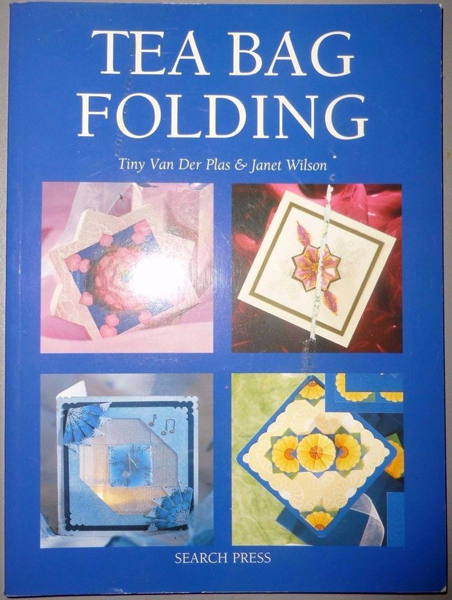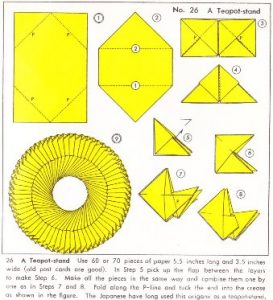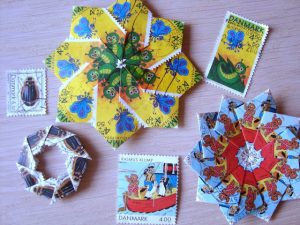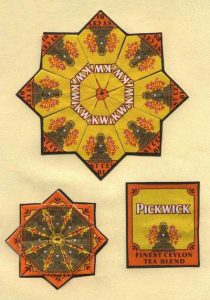Category: Rosettes
A.K.A. Medallions, Tea bag folding, Kite fold, Kaleidoscope origami

Small square pieces of paper (e.g. a tea bag wrapper) bearing symmetrical designs are folded in such a way that they interlock and produce a three-dimensional version of the underlying design. The wrappers are essentially square and of equal size, the two main prerequisites for producing symmetrical and pleasing imagery.
It is similar to the modular origami used to make stars, rings and wreaths. In both cases, paper is folded into units and many units join to form the final model. The major difference is that tea bag folding requires glue; the units do not interlock with one another.
Tea bag folding
The name “teabag folding” was coined by Tiny (pronounced Teeny) van der Plas, a practitioner of origami, who developed the technique in 1992 as a papercraft art for embellishing greeting cards.
The name “Tea Bag Folding” refers to the folding of tea bag wrappers, not the tea bags themselves.
In Europe, tea bag wrappers are colorful and have decorative designs. These wrappers can be cut to size and used to make beautiful medallions. The basic kite fold is used to produce rosettes that are a 3 dimensional version of the 2D design. There are many other folds and designs in existence and they are only limited by the imagination of the artist. Typical designs show birds, butterflies, flowers and generally imitate some raw beauty found in nature.
The basic rosette design requires eight matching squares to be folded into the ‘kite’ design. Math teachers find the designs very useful as a practical way of demonstrating some basic properties of symmetry.
Sources
Wikipedia – Teabag folding,
Origami Resource Center – Tea bag folding









